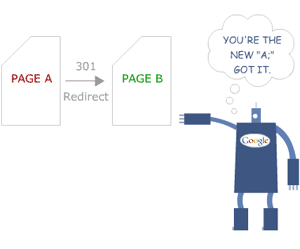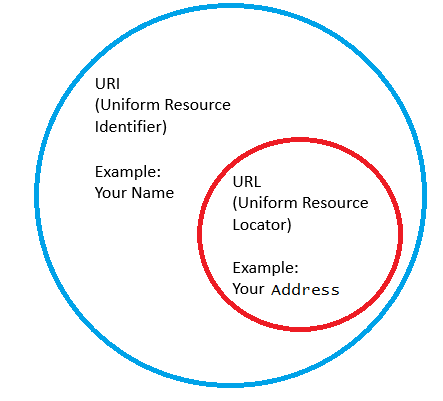Computer Components
Computer Memory
Computer Network
Computer Virus
Number Systems
Shortcut Keys
Terms
- What is a Browser
- Google Chrome
- Mozilla Firefox
- Internet Explorer
- Windows
- Computer Ports
- program
- Printers
- Microphone
- Monitor
- Motherboard
- Incognito Mode
- Mouse
- Memory Card
- CD
- ID
- ISO
- character
- server
- Keyboard
- Remote
- webcam
- Data
- URL
- keypad
- hub
- File
- Bytes
- Exabyte
- Gb
- Kilobyte
- Megabyte
- Petabyte
- Terabyte
- What is HDD
- What is SSD
- Memory vs Storage
- Non-volatile memory
- What is M.2 SSD
- How To Reboot A Computer
- Multi-Level Cell
- NAND Flash Memory
- What is the lock screen
- Block Storage
- Universal Serial Bus
- VRAM
- Cloud Hosting
- CompactFlash card
- What is WAP
- Classification of Memory
- Hardware vs Software
- Uses of Computer
- Uses of Internet
- Abacus
- Best Proxy Servers
- SSL VS. TLS
- Web Console
- GPU
- Difference Between LAN and WAN
- SSD and HDD
- Computer
- Data Migration
- JEDEC
- MLC vs. TLC vs. SLC NAND Flash
- VirtualBox Installation
- Num Lock
- PC
- MAC
- Continuous Data Protection
- Persistent Storage
- What is Bit
- Software Definition
- What is a File System
- When was the first computer invented
- How many generations of the computer
- Minicomputer
- Fourth Generation of Computer
- What is a Username
- What is ALU
Questions
URL
A URL is a type of uniform resource identifier and is address of a resource on the World Wide Web and the protocol used to access it. It is used to indicate the location of a web resource to access the web pages. For example, to visit the javatpoint website, you will go to the URL www.javatpoint.com, which is the URL for the javatpoint website.

The URL sends users to a specific resource online such as video, webpage, or other resources. When you search any query on Google, it will display the multiple URLs of the resource that are all related to your search query. The displayed URLs are the hyperlink to access the webpages.
A URL (Uniform Resource Locator) contains the information, which is as follows:
- The port number on the server, which is optional.
- It contains a protocol that is used to access the resource.
- The location of the server
- A fragment identifier
- In the directory structure of the server, it contains the location of the resource.
The additional information about the URL is described below with the help of an example:
Let's take an example: https://www.javatpoint.com/jtp.htm, it indicates the jtp.htm is a file located on the server with the address of javatpoint.com.
http:// or https://
The http is a protocol that stands for Hypertext Transfer Protocol. It tells the browser to which protocol will be preferred to use for accessing the information that is specified in the domain.
The https (Hypertext Transfer Protocol Secure) is an enhanced protocol as compared to http as it concerned with security. It provides the surety that the information, which is transmitted over HTTP is secure and encrypted. The colon (:) and two forward slashes (//) are used to separate the protocol from the rest of the part of the URL.
www.
The www is used to distinguish the content, which stands for World Wide Web. This portion of the URL can be left out many times, as it is not required. For instance, if you type "http://javatpoint.com," you will still get the javatpoint website. For an important subpage, this portion can also be substituted, which is known as a subdomain.
javatpoint.com
The javatpoint.com is the domain name for the website, and the .com is called TLD or suffix. It helps to identify the location or type of the website. For example, ".org" stands for an organization, ".co.uk" stands for the United Kingdom, and ".com" is for commercial. There are various types of domain suffixes available; you are required to register the name through a domain registrar to get a domain.
jtp.htm
The jtp.htm is the name of the web page, and the .htm is the file extension of the web page, which describes the file is an HTML file. There are many other file extensions available on the internet such as .php, .html, .xml, .jpg, .gif, .asp, .cgi, etc.
Where is the URL located?
A URL is located in the address bar or search bar at the top of the browser window. The URL is always visible in the desktop computers and laptop unless your browser is being displayed in full screen. In most of the smartphones and tablets, when you scroll down the page, the URL will disappear and only show the domain when visible. To visible the address bar, you need to scroll up the page. And, if only the domain is shown and you want to see full address, tapping on the address bar to show the full address.
What characters cannot be used in the URL?
It is realized by many people that space is not allowed in a URL. The URL string can contain only symbols ! $-_+*'(), including alphanumeric characters as it is documented in RFC 1738. Any other characters must be encoded in the URL if needed.
Is an IP address the same as a web address or a URL?
An IP address is not the same as a web address or a URL, as it is a unique number that is assigned to each device on a network. A domain name is assigned a unique IP address on the World Wide Web, and when entered an URL like javatpoint.com, it is translated by DNS into an IP address that used by routers to find web servers. Instead of using an IP address, a domain name is used as it is easy to remember by humans. For example, to remember an IP address like 216.58.216.164 is hard, and much easier to remember 'javatpoint.com.'
Understanding more complex URLs and parameters
A URL performs additional functions and added the parameters (additional information) to the end of the URL when it points to a script. For example, when you search any query on any search engine, it points to a search results page, including the additional information with the search query words.
An URL example is given below that points to the javatpoint search page, including the search query parameter of example search.
- https://www.javatpoint.com/cgi-bin/search.cgi?q=example%20search
In cgi-bin directory, the script file being pointed to is search.cgi in the above URL example. It is assumed to be a Perl script as this file ends with .cgi.
The file name is a question mark (?) after the script. In the URL, the question mark separates the URL from all the variables or parameters to be sent to the script. The parameter being sent is q=example%20search, in the above URL example. The "example%20search" is the value that is sent to the "q" variable. Space is encoded as %20 as spaces are allowed in a URL. Furthermore, a+ is also used to represent space in many scripts.
There is a variable in the example that is executed, as the script uses it. Also, scripts can contain multiple variables; each variable is separated by a symbol & (ampersand), as shown in the following example:
- https://www.javatpoint.com/cgi-bin/search.cgi?q=example%20search&example=test
The above example contains two different variables; the q" variable equals "example search" and the "example" variable equals "test."
Why URL?
- The URL is beneficial, as the written information in the URL provides users the option to switch from one web page to another by clicking only one mouse click.
- Every URL is unique and tells users how to access a specific resource.
- When a user types a URL into the web browser and opens any hyperlink from search results, the browser forwards a request to a webserver to fetch files related to thesearch query.
- A website domain or URL identifies one particular file, and it is the most important part of your website. Usually, by using words that end with .net, .com, or .org, you can get traffic on your website.
What is URL Redirect?
A URL redirect is a web server function that takes your URL and points it to another. For example, consider, you had the old URL "myvlogsite.com," and you wanted to visitors' access directly to the new URL "javatpoint.com." Redirect is the best solution for it; when anyone type "myvlogsite.com" in the browser would be redirected to the new URL "javatpoint.com." There are various kinds of redirects for web developers, such as HTTP 3xx series status codes, manual redirects, JavaScript, metatag refreshes, server-side scripts, frame redirects, and more. Furthermore, the URL redirect may also be known as URL forwarding, domain forwarding, HTTP code 3xx redirect, and domain redirection.
There are many reasons for web users may be redirected from one URL to another, such are as follows:
- Merging of two websites
- Change of business name
- To direct content to a recently updated domain name
- Landing page-split testing for marketing tests
- To direct traffic toward recently updated content
A URL redirect is also used to cause problems for users and their computers through illegal activities like phishing. Additionally, it can be used to remove the search results of web browsers, but nowadays, most of the search engines are capable of detecting these types of fraud attempts. Redirect a web page, the several HTTP protocol 3xx series codes are the most common way. The members of this series have various attributes, such are as follows:
- The number 300 provides various redirect choices. For instance, an option to select alternative languages.
- The number 301 indicates when a site is moved permanently. For example, when the name of a business has changed.
- The number 302 is used for an unspecified redirect.
- 303 display the output of CGI (common gateway interface) scripts.
- 307 is used, when a site is to be redesigned.
The website address obtains a new URL when a website visitor is redirected to a newly named website URL. Businesses often change their website's homepage into a redirect page. They transform page with a concurrent message briefly describing the redirect. A meta tag is embedded into the website's source code behind the scenes. The regular visitors of the website will receive an error message "404 - Not Found" without a redirect.
Different types of redirects
1. 301 Redirect
It is a permanent type of unmasked redirect that instructs web browsers to move from one site destination to another automatically. It is one of the most common and searches engine-friendly method for implementing redirects. It should be used when your website was permanently moved to the new address.

2. The redirect can also be used in some programming languages like PHP; programmers can use a canonical 301 redirect to perform a change for many pages in a domain. Furthermore, the 301 redirect passes over 90% of the link juice; thus, it is also beneficial for SEO purposes.
3. 302 Redirect
It is a temporary type of unmasked redirect and not widely used. It is a name for an HTTP status code that is used when a certain URL has been changed temporarily to a different address. Search engines will not index the destination URL, index the original URL, and display it in search results. The browser is redirected from one URL to another with the help of 302 redirects. Additionally, it is characterized as a permanent redirect and based on a different HTTP status code. In many cases, it can return a cleaner and simpler URL for users. To use 302 redirects, other technologies and different search engines have their own specific strategies.
4. 303 Redirect
A 303 redirect is also known as HTTP 303 that is a response to an HTTP status code. It is a specific type of redirect as a response to a request for a URI (Unified Resource Identifier). It also has its own syntax; the W3C specifies to use a GET method to access the desired destination if a request for a different URI.
When should be used a redirect?
1. You have duplicate content
Duplicate content is that it appears more than once on the page. There are multiple pages on Google that contain duplicate content. In this situation, it is difficult for Google to understand which page is the correct one. You can use a 301 redirect on the duplicate piece of content to direct to the original page. It will create a better experience for your users and help to improve your search engine rankings.
2. You have changed your domain
The use of redirect is useful when you are making change your domain name and probably do not want to lose any built links.
3. You have multiple domains
To protect the online brand, some people purchase multiple domain names. So, they will need to redirect any of the old domain to the new domain. Many companies do this to gain additional traffic from common misspellings. Also, they can prevent competitors from buying a similar domain and can redirect them to their own site.
Difference between URL and URI

There are numerous differences between URL and URI, which are as follows:
| URL | URI |
|---|---|
| URL stands for Uniform Resource Locator that used to describe the identity of an item. | URI stands for Uniform Resource Identifier, which offers a technique for defining the identity of an item. |
| The primary objective of the URL is to get the address or location of the resource. | The primary objective is to find a resource and distinguish it from other resources with the help of a name or location. |
| URL is a type of URI; therefore, all URLs can be URIs. | URI is the superset of URL; thus, all URIs are not URLs as a URI can be a name rather than a locator. |
| It is only used for locating web pages. | It is used in various languages such as HTML, XML and other files XSLT, and more. |
| A URL specifies where a resource is occurring and a way for retrieving a resource. | A URI identifies a resource either by URL or URN or both. |
| In URL, the scheme must be a protocol such as FTP, HTTP, HTPPS, and more. | The scheme may be anything in URI like a name, specification, protocol, and more. |
| It contains the protocol information in the URL. | It does not include protocol information. |
| It includes components like path, domain, hash, string, query, and more. | It includes components such as path, scheme, query, fragment component, and more. |
| It offers specification on what type of protocol is to be used. | It does not contain protocol specification. |
| An example of URL: https://google.com | An example of URI: urn:isbn:0-486-27557-4 |


